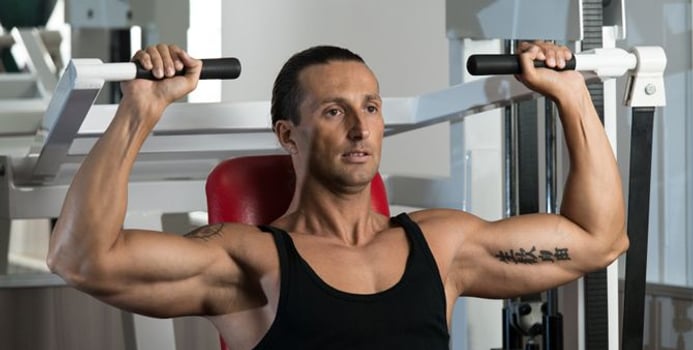Chances are that you're familiar with each major muscle group in the human body. It's likely that you've formulated an effective workout regimen that segments each muscle group into individual sets of various exercises. But it's also possible that you're gravely unfamiliar with several vital muscles that are critical to your well being. Don't worry, though. Several fundamental weightlifting exercises and stretches work out five important muscles that you've never heard of.
5. Psoas major
The psoas (so-uh s) major is a muscle in the hip that conjoins the upper femur with the lumbar spine. It also connects the lower femur with what is referred to as the iliacus muscle, which creates a series of nerves that enable several vital muscle groups, such as the quadriceps and abdominals, to function. Commonly considered a hip flexor muscle, the psoas stabilizes the spine, which means it helps you stand up straight. To exercise your psoas, practice lifting your thigh parallel to the ground while keeping your back straight for 20 to 30 seconds, and then switch legs.
4. Levator scapulae
The levator scapulae conjoins the skull and neck with the shoulder blades. It is the primary stabilizer in repetitive shoulder exercises, such as the shoulder press. Even though this muscle might be relatively unknown to the average gym-goer, it's the main component of shoulder shrugs and neck extensions.
3. Piriformis
The piriformis, meaning "pear-shaped" in Latin, is responsible for the external rotation of the knee, which helps prevent mobility-crippling injuries like meniscus tears. It is located underneath the gluteal region, and is situated parallel to the gluteus medius. This muscle is essentially a hip rotator that disallows the knees from buckling during normal human activities, such as walking. The piriformis can be exercised by performing squats and deadlifts.
2. Brachialis anticus
You're certainly already familiar with the biceps, which is more scientifically known as biceps brachii. But it's possible that you didn't know the biceps actually isn't the muscle you proudly peer at when flexing in front of a mirror. The brachialis anticus is an upper arm muscle that lies deeper than the biceps, and helps flex the elbow joint. It's also the primary muscle being exercised when performing a standard biceps curl. The muscles in your arms, including the brachialis, are important movers for whole body muscle growth.
1. Popliteus
The popliteus muscle is perhaps one of the most vital muscles in your entire body. Located below the knee near the shinbone, the popliteus is responsible for the unlocking of your knees, which allows you to walk. It also helps rotate the femur and tibia, and is used in both the standing and sitting positions. Exercising the popliteus strengthens your ability to walk properly while additionally aiding the prevention of hip injuries. Aforementioned exercises, like squats and deadlifts, help to keep your popliteus operating effectively.
Bottom line
The anatomy of the human body can sometimes be difficult to comprehend, but each muscle throughout the body holds a distinct purpose in aiding mobility. The overplayed cliché reigns true: everything is connected. Even if your primary goal in working out has been to burn body fat for the sake of improving your appearance, you've been simultaneously helping your body function normally.

John Shea is a team sports fanatic and fitness aficionado. His work has been published across a wide platform of online audiences in the realm of health and fitness. His passion for fitness is exemplified in his writing, as he aims to help readers improve their overall well-being.



